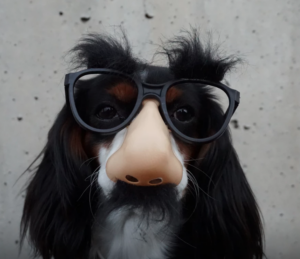
02 Feb When to use dental X-ray
Posted at 03:20h
in Uncategorized
When does Dr. Startup use dental X-ray? Always. Here’s why.
Dental X-rays (Dental Radiographs) are crucial for accurately diagnosing and treating dental health. Dental X-rays before, during, and after the procedure make a huge difference on the quality of dental care.
Without Dental X-rays, you just see the tip of the iceberg. In dogs and cats, more than 50 % of the tooth is below the gum-line. The visible part of the tooth gives you less than half of the information you need.
Dental X-ray is just a little more expensive on the front end; however, the health risks for pets and financial risks far out weight the minimal extra cost.
Why dental radiographs are always a good idea:
- It is the best use of anesthesia time
Dental X-ray shows which teeth need to be extracted, if any! Sometimes an oral exam indicates that a tooth needs to be extracted, and the dental X-ray shows otherwise. Often times the opposite is true – the dental X-ray shows a seemingly healthy tooth needs to be extracted. If a tooth needs to come out, the X-ray greatly informs the most efficient, least traumatic, and simplest way to extract it. An X-ray during the procedure, called an intra-operative X-ray, can show that the job is complete, or that there is more work to be done. For example, root tips can be left behind and can cause severe dental pain for a pet. The intra-operative X-ray will show if any tooth root tips are left and how to get them out.This tooth appears fine in the oral exam. The X-ray shows abscesses and tooth resorption. These are painful conditions. The post operative X-ray shows complete removal of the diseased tooth. The patient healed quickly and felt much better after surgery.
- Dental X-ray completely informs the procedure
Without dental x-ray, be prepared for surprises. For example, with conditions like severe periodontal disease, the jaw is often not in good shape prior to a dental procedure. A frail jaw can easily fracture during surgery… Not a good surprise! Dental X-ray can inform the procedure and the pet owner. Owners should be notified of risks and offered options immediately after the pre-operative X-ray.
Check out this pre-operative X-ray below taken before any surgery was done. This X-ray let me show the owner that teeth needed to be extracted and a splint applied.
- Legal issues
Pre-existing pathology, like jaw integrity, needs to be documented. As mentioned above, pet owners need to be made aware of pathology, risks, and their options. Pre-operative X-rays show the condition, and post surgery X-rays give evidence of a job well done. Click this link to read about some relevant legal cases.
- Client education
To pet owners, a picture is worth 1,000 words. It can be hard to explain very painful dental conditions, because animals rarely show signs of dental pain and many dental conditions involve the part of tooth that cannot be seen (the tooth below the gum-line). Dental X-rays can reveal how much pain a pet experiences. Your pet will disguise dental pain. Click here to read more.
- You just cannot know what is going on under the gum-line without dental X-ray
I have clients that say their pet’s teeth have been “cleaned” every year. They think their pet has a healthy, pain free mouth. Sadly, the crowns of the teeth were cleaned every year, and the issues below the gum-line were not addressed. Then these clients learn that even though their pet had a cleaning every year, their pet has been in pain all along and the condition has been getting worse. Imagine how you might feel in their position! Without COHAT, comprised of a thorough dental probing, charting, and dental X-ray, a crown “cleaning” is essentially useless.
I believe that a complete COHAT with dental x-ray is the way to go. I am an advocate for the general practitioner, and I am passionate about teaching veterinary dentistry and dental X-ray. I hope you feel free to reach out to me with any questions or needs that you have.
Best regards,
Dr. Startup










